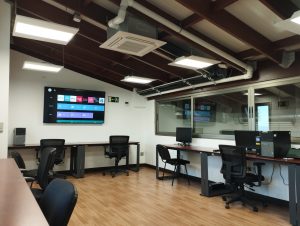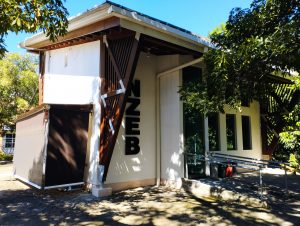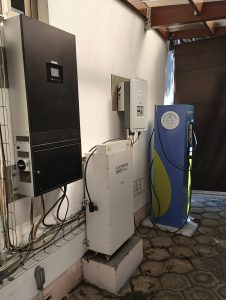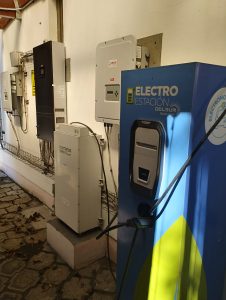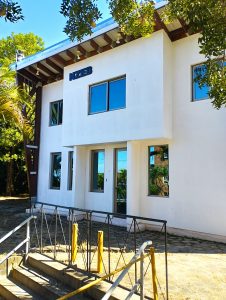Net Zero Energy Building
NZEB-El Salvador is not only an instrumented laboratory that records data in real time on the energy and thermal performance of building systems, it is also the result of a new integrative design methodology for buildings in the country. Likewise, it is constituted as a didactic tool for academia and a measurement and testing instrument for the industry.
Some of its technical specifications are the following listed:
- Construction system and structure made of wood. (negative carbon emissions)
- It counts in its walls with R-25 polyurethane foam for thermal insulation
- It has 14,175 kW photovoltaic solar system with 3 Inverters
- The roof is sloped 13° to the south and the facades are sloped 10° north and 36° south
- The system includes a 10 kWh lithium battery energy storage system for research and charge optimization purposes.
- Actually, it has 74 measurement points with sensors for the characterization of its useful life, this sensors includes indoor humid relativity, indoor temperature, indoor CO2 emissions sensors, luxometers, water flow measurement for the whole facility and a wheather station which measures solar radiation, wind speed, external temperature and humidity. The indoor temperature are located for measuring the temperature in the walls, floor, windows and the roof of the whole building.
The air conditioning system is a VRF inverter system with 17 kW (5.83 tons of refrigeration) of refrigeration capacity with two cassette units and one fan coil. - The lighting system consists of dimmable LED panels. In general, the lighting power density (LPD) is 7.73 W/m2.
- The air conditioning system and the lighting system are controlled for a building automation system that optimizes energy use, controlling the indoor comfort variables of the building.
- The electric vehicle has an 88 kW electric motor with a nominal torque of 295 Nm, equipped with a lithium battery with a storage capacity of 28 kWh. Rated combined efficiency is 15.4 kWh / 100 km.
- The NZEB has three sections for working, which are a laboratory for measuring and registering data of the building, it also has a showroom and classroom area.

